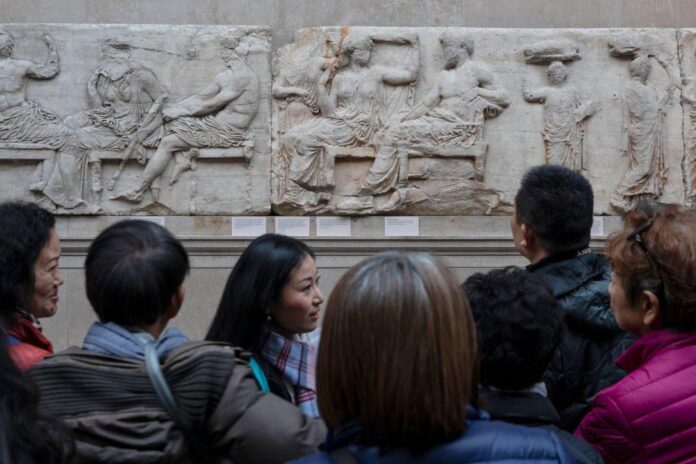Greece’s prime minister hinted in an interview about a possible solution to the longstanding and bitter conflict with England over the Parthenon Marbles, iconic artifacts that were removed from Athens two centuries ago and now reside at the British Museum. But he refuses any resolution that would acknowledge the Brits’ ownership of the works by calling their travel to Greece a “loan,” he said.
“We will never recognize that these sculptures are owned, legally owned by the British Museum,” Kyriakos Mitsotakis told the Associated Press in an interview at a recent election campaign event in the Greek city of Volos.
“I wouldn’t like to comment publicly on the discussions that we’ve had,” Mitsotakis said. “I would just say that we are, without changing … our fundamental position about the ownership of the sculptures, we’re trying to explore a possible win-win proposition that would work for both sides.”
A British Museum spokesperson told Artnet News in January that the two parties were working on a solution in talks that the museum deemed “constructive.” The negotiations concerned the works going on display in both London and Athens.
That statement came after the Telegraph reported that the museum’s chairman, George Osborne, had drafted a historic deal with Greece to possibly return the treasures in a “cultural exchange” that would effectively be a “loan agreement.”
When asked recently, Mitsotakis refused any resolution that refers to the works’ display in Greece as a “loan.”
“No, no,” he said. “That word ‘loan’ is not part of … what I consider a win-win solution.”
The issue has been on hold during Mitsotakis’s election campaign. “Should we get reelected,” he said, “I’m looking to pick up again the momentum and build upon the progress that we have made.”
Created between 447 and 432 BC, the artworks once adorned the frieze of the great temple to Athena at the Parthenon, much of which was destroyed during a siege in 1687. British Lord Elgin removed many of the surviving works in the early 19th century, while Greece was under Ottoman rule. Greece says the removal took place under occupation, and was illegal.
Officials at the British Museum, where the works have been installed since 1816, have historically rejected these claims, and British law prohibits returning artifacts from the British Museum.
Other institutions have been more accommodating to the Greeks’ calls for return. In December, Pope Francis ordered the Vatican Museums to return three marble fragments from the Parthenon in what he called a “donation” to the head of the Greek Orthodox Church.
More Trending Stories:

























